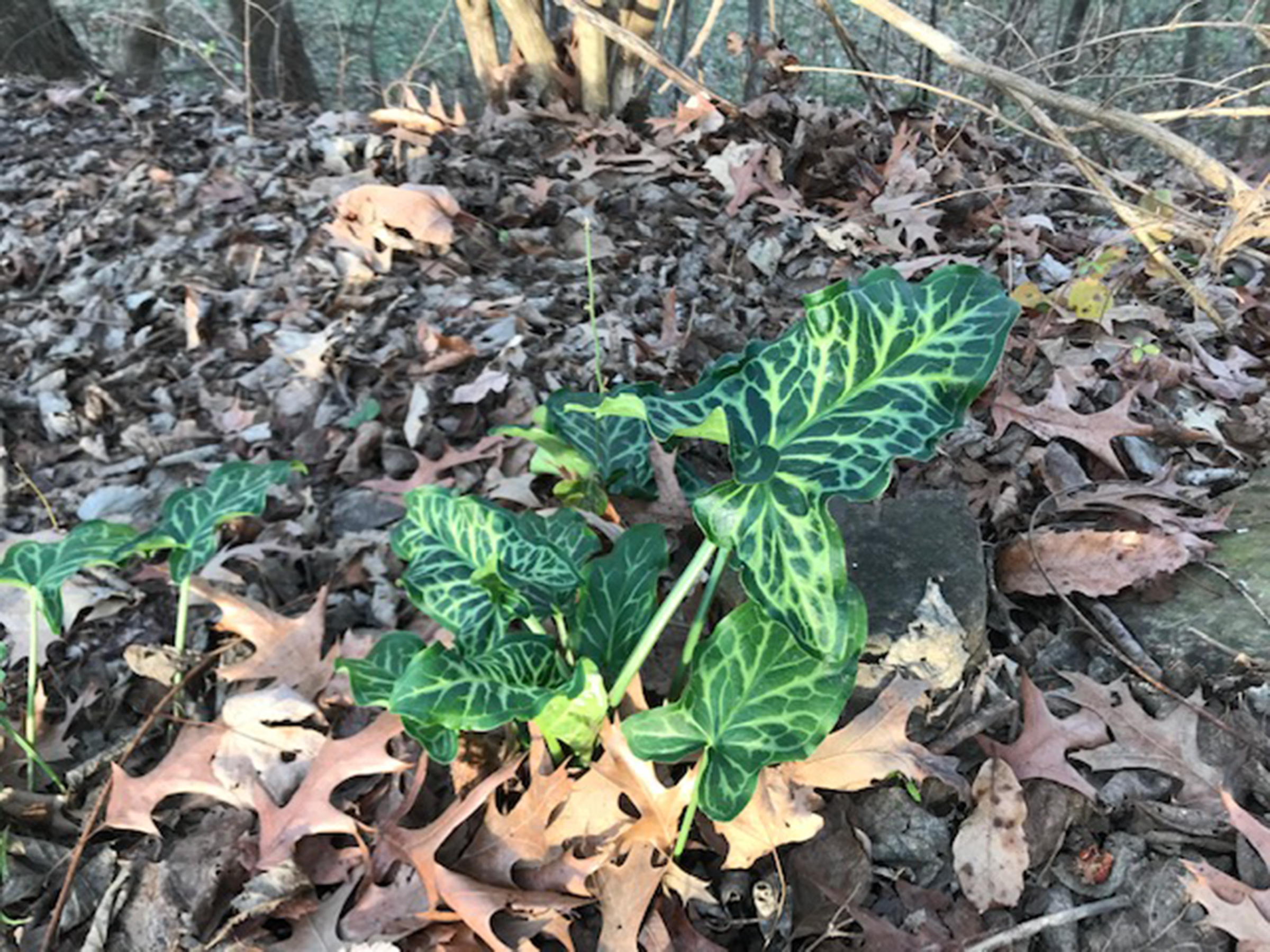Q: Recently I had to divide and re-pot my Boston fern. When I took it out of its pot there were grape-like corms all over in the soil and clinging all around the outside of the plant. What are they and what are they good for?
A: The small ball-shaped growths are bulbils or root nodules. Judging from the photo you sent, you have an impressive amount of them. These small bulbils usually develop toward the end of the growing season. You can use them to propagate more plants. If you saved them, get a pot and put in fresh potting soil. Plant the bulbils just under the soil surface. Place the pot in a clear plastic bag to help keep moisture in, and give the pot bright light, but not direct sunlight. Hopefully, within a month, you should see small plants emerging.
■ ■ ■
Q: Can you identify the plant in the picture? I found it growing in a partially shaded area. It is healthy through the winter and then seems to die back in our late summer heat. We live in Mountain View.
 Italian arum sends up its foliage in the fall; after it blooms in the spring, the leaves die back, leaving showy orange seed spikes. (Special to the Democrat-Gazette)
Italian arum sends up its foliage in the fall; after it blooms in the spring, the leaves die back, leaving showy orange seed spikes. (Special to the Democrat-Gazette)
A: The plant is an Italian arum. The plant starts growing in the cool weather of late fall. It can produce a pale green to white spathe-bloom. When warm weather appears, the plant dies back but it can leave behind a naked stem of orange berries.
■ ■ ■
Q: My wife and I planted a ginkgo tree 10 years ago in our front yard. The tree has grown from 6 feet tall to 25 feet and it appears healthy. It gets plenty of sun and water, and we fertilize regularly. The tree was planted because we love the fall color of these trees. The problem we have experienced is that every year the leaves remain green, and when the first appearance of yellow begins to show on the uppermost leaves, within 24 hours all the leaves turn yellow and fall from the tree. This year it happened overnight and we awoke to a lawn covered with bright yellow leaves, and a naked tree. Most other ginkgoes in our area had already turned yellow and were beginning to lose most of their leaves by this time. Our yard is on Crowley's Ridge and is at the bottom of a hill. There are other tall trees around and on our property, but all are 60 or more feet away from the ginkgo. We look forward to the fall colors of the ginkgo trees in our area and know where most are located in Jonesboro and surrounding communities and keep up with when they are at their peak. I have never seen another of these trees do as ours does in terms of the sudden change in colors and immediate loss of leaves. Any ideas or suggestions?
A: Leaves change color in trees based on weather conditions, where the tree is planted and the genetics of the tree. Best fall color occurs when plants have ample moisture, cool nights and warm days. Obviously, your tree has the proper pigment in it, but timing is off. It could be the location at the bottom of the hill is moderating the weather conditions. If you look at where trees start changing color, you've noticed that the ones at higher elevations start first. I have a Japanese maple that normally doesn't start changing color until so late in the season that the cold snap hits and I don't get to enjoy their fall color. This year, the prolonged mild weather allowed me to enjoy the color for several weeks. I think sunlight is more a factor with my tree. Other than transplanting the tree, which I doubt you want to do when it's 10 years old, I don't think there is much you can do to change the fall color cycle.
■ ■ ■
Q: What spray can we use to spot-spray winter weeds? Please reply. We are in need of your expert advice.
A: Before this past weekend, our lawn grasses had not gone dormant. Now they should be. You can spray lawns with a broadleaf weed killer; in garden beds needing just a spot-spray, you can use Roundup. Winter weeds have been growing at warp speed this year, so hopefully the cooler weather will slow them down.
Retired after 38 years with the University of Arkansas Cooperative Extension Service, Janet Carson ranks among Arkansas' best known horticulture experts. Her blog is at arkansasonline.com/planitjanet. Write to her at P.O. Box 2221, Little Rock, AR 72203 or email jcarson@arkansasonline.com
